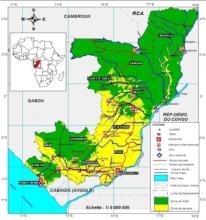Land Library Search
Through our robust search engine, you can search for any item of the over 73,000 highly curated resources in the Land Library.
If you would like to find an overview of what is possible, feel free to peruse the Search Guide.
/ library resources
Showing items 73 through 81 of 3148.The design of efficient Green Infrastructure —GI— systems is a key issue to achieve sustainable development city planning goals in the twenty-first century.
Green infrastructure (GI) is a strategic planning approach that can contribute to solutions for ecological, social, and environmental problems. GI also aims to conserve natural and semi-natural landscapes and enhance ecological networks.
À Madingou, la question de la gestion foncière se pose avec acuité, car le développement des espaces urbains empiète sur les terres dévolues à l’agriculture périurbaine.
New town development as a form of large-scale development is not a new phenomenon, particularly in developing countries.
Propelled by rapid urbanization, city administrations in low-and middle-income countries face a raft of challenges to secure food and nutrition for its poor urban dwellers.
In fast-developing regions, like Southeast-Asia, monitoring urban areas presents a challenge given the lack of publicly available data. This is an issue that precludes the nuances of a city’s growth and undermines the way land-use is considered with respect to planning.
Cities have a wide variety of green infrastructure types, such as parks and gardens. These structures can provide important ecosystem services (ES) with a major impact on human well-being.
The urban area is characterized by different urban ecosystems that interact with different institutional levels, including different stakeholders and decision-makers, such as public administrations and governments.








